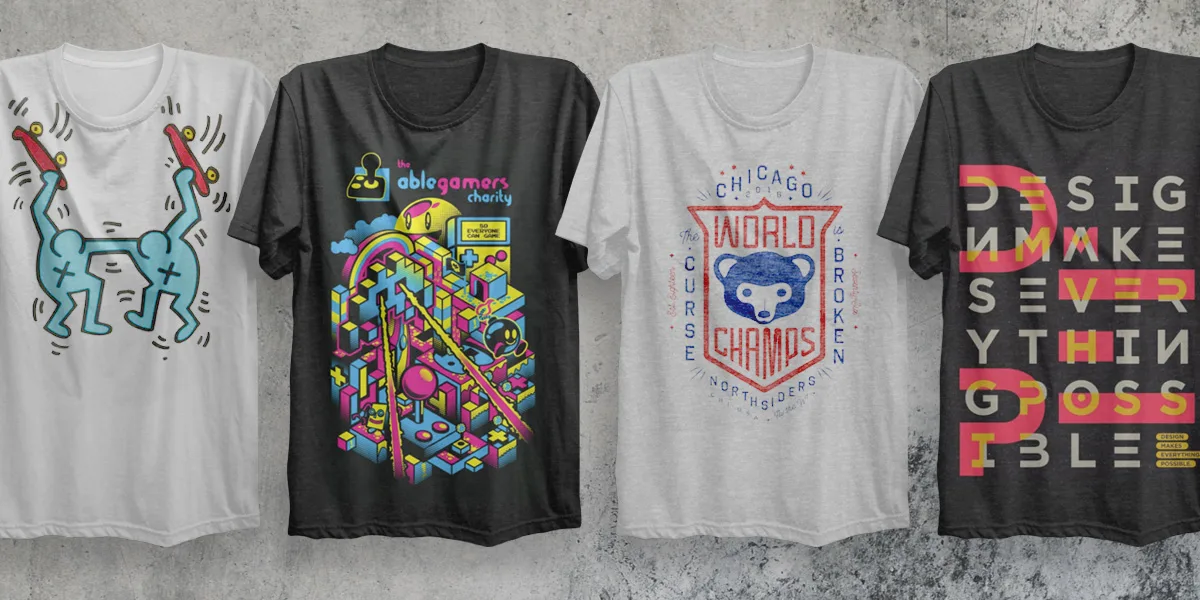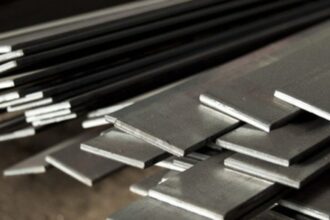T-shirt printing has evolved far beyond basic designs and traditional methods. With new technologies and creative techniques emerging constantly, the world of custom t-shirts offers exciting opportunities for designers, businesses, and hobbyists alike. Whether you’re running a fashion brand, designing for a special event, or creating personalized items, understanding the innovative printing techniques available can take your designs to the next level. Let’s explore some of the most cutting-edge printing methods that are shaping the future of t-shirt design.
Traditional Methods vs. Innovative T-Shirt Printing Techniques
While traditional methods like screen printing have been the go-to for custom t-shirt printing for decades, they come with some limitations. Screen printing requires setup time, making it more suited for large runs rather than small batches. Additionally, it can be difficult to print intricate or multi-colored designs without adding layers of complexity. On the other hand, newer methods of printing offer more flexibility, superior detail, and a broader range of design possibilities.
The rise of innovative techniques allows for more personalized and creative t-shirt designs, offering unique options for everything from casual tees to limited-edition collections. Let’s explore some of the most exciting printing methods you should consider.
Direct-to-Garment (DTG) Printing
Direct-to-Garment (DTG) printing is one of the most popular and effective methods for producing high-quality, full-color designs on t-shirts. Using advanced inkjet technology, DTG printers apply the ink directly to the fabric, creating crisp, detailed prints with vibrant colors. The process is similar to how a standard inkjet printer works, but it’s optimized for fabric, offering incredible versatility in design.
The primary benefit of DTG printing is its ability to print high-resolution, full-color images with no limitations on the complexity of the design. Unlike screen printing, which requires creating separate screens for each color, DTG can print detailed graphics in a single pass, making it ideal for small batches and one-off custom items.
DTG also produces a soft print that feels integrated with the fabric, unlike traditional methods that leave a thick, raised layer of ink. This makes it a perfect option for those who want high-quality custom designs without sacrificing comfort.
Sublimation Printing: Color and Coverage
If you’re looking for vibrant, full-coverage designs, sublimation printing is an excellent choice. Sublimation works by turning solid dye into gas and bonding it with the polyester fibers of a t-shirt, producing a print that’s not only bright but also long-lasting. Because the dye becomes part of the fabric itself, there’s no risk of cracking or peeling over time.
One of the main advantages of sublimation is its ability to produce all-over prints, meaning you can cover the entire t-shirt with intricate designs, patterns, and photographs. The prints are incredibly durable and will last for the life of the shirt. However, sublimation works best on polyester and polymer-coated fabrics, and the designs are most vibrant on lighter-colored materials.
For those looking for unique, full-length designs or photographic images, sublimation printing is the go-to method.
Vinyl Heat Transfer Printing
Vinyl heat transfer printing uses a special vinyl material that’s cut into shapes or designs, which are then transferred to the fabric using heat and pressure. This technique allows for incredibly crisp, bold designs, especially for logos, text, and geometric patterns. It’s highly durable and perfect for those who want designs that can withstand repeated washing without fading or cracking.
One of the great things about vinyl heat transfer is its versatility. You can use different types of vinyl to create different effects, including metallic finishes, glitter, and reflective designs. Vinyl also works well for adding extra layers to a design, such as combining different colors or textures for a multi-dimensional effect.
This method is ideal for producing bold, simple designs and is commonly used for custom t-shirts, team apparel, and promotional items.
DTF Transfer Printing: A Game-Changer in Custom T-Shirt Design
DTF Transfer printing, or Direct-to-Film printing, is a relatively new but rapidly growing technique in the t-shirt printing world. This process involves printing a design onto a special transfer film, then transferring the design to the fabric using heat and pressure, similar to traditional heat transfer methods. However, DTF offers several advantages over other methods.
One of the key benefits of DTF transfer printing is its ability to print on a wide variety of fabrics, including cotton, polyester, and even blends. The design is printed in high resolution, offering excellent detail and vibrant colors that stand out on both light and dark garments. The printed design is then transferred to the fabric, creating a soft, flexible finish that won’t crack or peel.
DTF Transfer printing is ideal for small to medium production runs, especially when the designs involve multiple colors or intricate details. It’s also a great option for businesses looking to print on a variety of fabric types without needing to change printing methods. As a result, DTF has become a favorite choice for custom t-shirt printing companies that want versatility, durability, and high-quality results.
Laser Etching: Adding Texture and Depth
For those looking for a high-end, sophisticated design, laser etching offers a unique way to add texture and dimension to custom t-shirts. This technique uses a laser to etch or burn a design directly into the fabric, creating a permanent, detailed impression. The result is a subtle, tactile texture that adds depth and complexity to the design.
Laser etching is typically used on darker fabrics, such as black or navy, where the contrast between the fabric and the etched design is most noticeable. The beauty of this technique lies in its precision—laser etching can produce intricate details that are hard to achieve with other methods. Plus, since the design is etched into the fabric, it won’t peel or fade over time, ensuring the design’s longevity.
Laser etching is often used for high-end or limited-edition garments and can be paired with other printing methods for a truly unique custom look.
3D Puff Printing: Bring Designs to Life
One of the most exciting advancements in t-shirt printing is the introduction of 3D puff printing. This technique involves adding a foam layer to the fabric beneath an embroidery design, creating a raised, three-dimensional effect. The result is a striking design with added depth and texture, making it ideal for logos, lettering, and even simple graphic elements.
3D puff printing has become particularly popular in the fashion, sportswear, and streetwear industries, where bold, eye-catching designs are essential. The raised design stands out from the fabric, adding a premium, high-quality feel to custom apparel.
Glow-in-the-Dark and UV Printing: Shine in the Dark
Glow-in-the-dark and UV printing techniques are gaining popularity for their ability to create designs that stand out under special lighting conditions. UV printing uses ultraviolet light to cure special inks, making designs that pop under blacklight, while glow-in-the-dark prints charge in the light and glow in the dark.
These methods are perfect for creating custom t-shirts for nighttime events, music festivals, or themed parties. Whether you’re designing shirts for a concert or a glow-in-the-dark event, these innovative techniques make sure your designs grab attention when the lights go out.
Eco-Friendly T-Shirt Printing: Sustainable Choices for a Better Future
With sustainability at the forefront of many consumers’ minds, eco-friendly t-shirt printing methods are becoming increasingly important. From water-based inks to organic cotton fabrics, these eco-conscious alternatives reduce environmental impact while still delivering high-quality prints.
Water-based inks, for example, are biodegradable and don’t contain harmful chemicals, making them a safer choice for both the environment and your skin. By choosing sustainable fabrics and printing methods, you can offer custom t-shirts that align with the values of eco-conscious consumers, creating designs that not only look good but feel good too.
Hybrid Printing: The Best of Both Worlds
Hybrid printing involves combining two or more techniques to create a unique custom t-shirt. This could mean using DTG printing alongside embroidery or combining vinyl with sublimation printing. The possibilities are endless when you mix and match printing methods to achieve one-of-a-kind designs.
Hybrid printing is particularly useful for creating intricate designs that require multiple effects, like a combination of textures, finishes, and colors. For brands that want to offer their customers something truly unique, hybrid printing is an exciting option that can make your custom t-shirts stand out in a crowded market.
Conclusion
With so many innovative t-shirt printing methods available today, it’s easier than ever to create truly unique designs that stand out from the crowd. Whether you’re looking for high-resolution prints with DTG, the vibrant coverage of sublimation, or the versatility of DTF Transfer printing, there’s a method that’s perfect for your needs. As technology continues to advance, the possibilities for custom t-shirt designs will only continue to expand. Explore these cutting-edge techniques and unlock a world of creativity in your t-shirt printing journey.

















